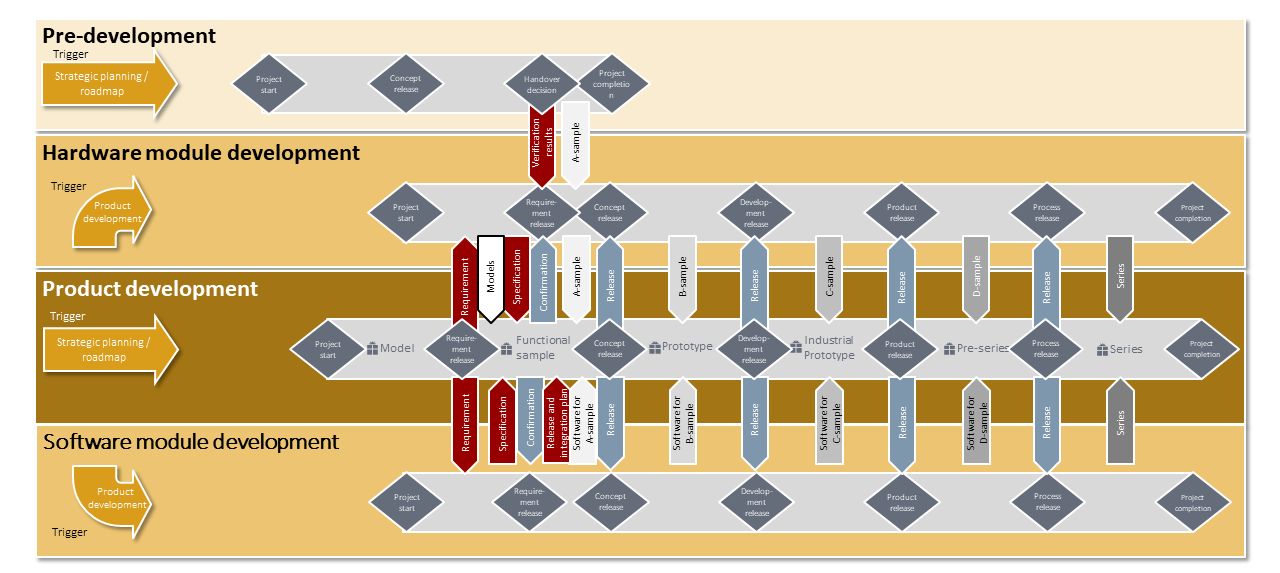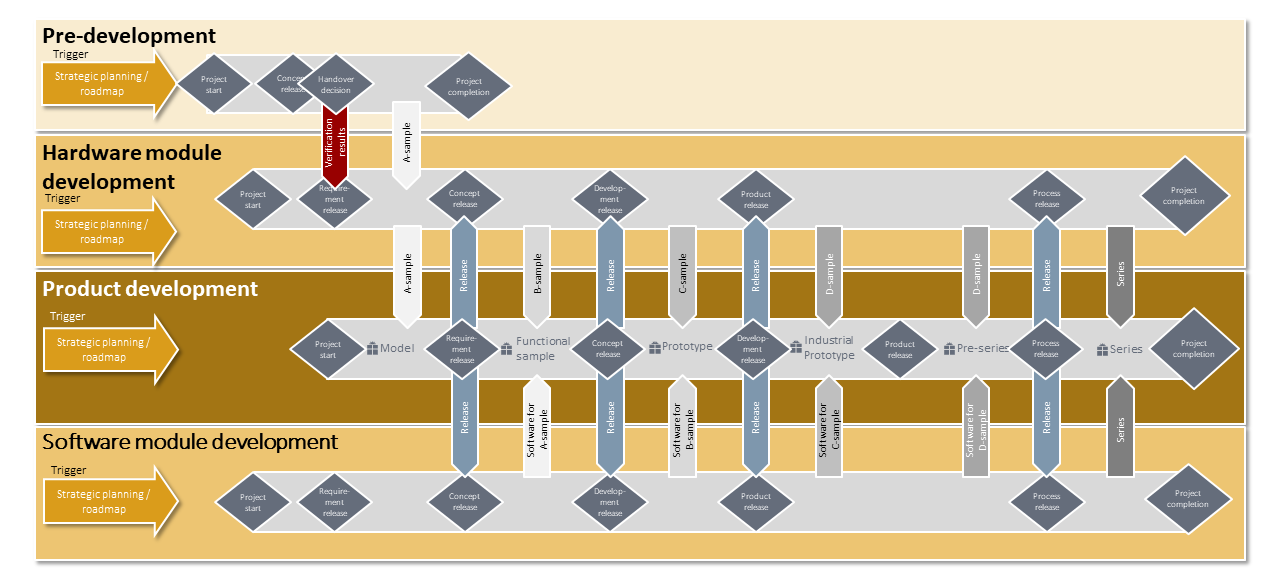PEP in the context of pre- and module development
You have established an interdisciplinary product development process. "That's it", you think. But now comes the next challenge. How can you remove technical risks from the product development process? How can you separate module development and product development in the course of increasing product complexity and modularisation? We show you how to become even more successful with a PDP process family.

Product development and pre-development process
Once you have established a high-performance PDP for product creation, the next step may be to set up an entire process family.
In most cases, you will first define an additional pre-development process. In this way, you develop individual innovative new functions, components or modules before the actual product development begins. You always do this when it is not certain that the idea can be successfully implemented and the duration until success is difficult to estimate. In this way, you shift greater risks from the actual product development process, which is supposed to reliably provide a new product by a target date, to pre-development. The pre-development process is also designed as a stage-gate process in principle with the same characteristics as the PDP. However, it is much simpler and usually ends with a partially verified functional prototype or A-sample.
The dovetailing of the pre-development process and the PDP takes place through the parallelisation of individual phases. Before the product concept and the product architecture are finally defined in the PDP, a handover decision must be made on the results of the pre-development process. I.e. if the new idea could be successfully partially verified, it can be incorporated into the product concept. Otherwise, the function is missing or is represented by an "old" solution. Afterwards, it is agreed which further verification scopes will still take place within the pre-development process or which will be carried out in the PDP and how knowledge and results will be transferred to the PDP project. You can find more about technology and pre-development here.
Product creation and module creation processes
In the next step, it makes sense to define a separate module development process for hardware (mechanics, electronics) and software for more complex products. This process definition again follows the rules of the PDP process design. The synchronisation of the processes is crucial. Simplified, this is done with a repetitive sequence: The PDP defines requirements for module development. The latter returns specifications, development results and patterns. The patterns are integrated into the product and verified according to the principles of the V-Modell. If verification is successful, confirmation is given. The release of a quality gate in the PDP then leads to the release of the quality gate in the module development process.
Software development is usually carried out using agile working methods. The phases are divided into sprints. As the PDP is leading, the quality gates are maintained in the sense of a hybrid approach.
Crucial for successful control and synchronisation of these processes is the early definition and continuous updating of a release and integration plan.
The figure shows a hardware and software module development triggered by product creation. When you have reached an even higher level of maturity in your strategic planning and roadmap processes, plan module development projects independently of your product creation projects. Then they run ahead of the product development and are synchronised as shown in the figure below.
Conclusion
With separate pre-development, you reduce the risks in the product development process. Especially with complex products, a modular product architecture makes sense, which requires two module development processes for hardware and software modules in addition to the actual product development process. This is the only way that module projects can be strategically planned separately, started before the product development process and the complexity can be mastered. At the same time, the V-model is implemented even more efficiently, which has a positive effect on product development costs. The prerequisites are a good strategic planning process and efficient requirements management.
Your benefit
- You start product development with a higher level of protection against technical risks.
- You create the prerequisite for implementing separate product and module roadmaps.
- You implement the V-model more consistently and reduce your product development costs.
- You benefit from our many years of experience and continuous further development of our solution approaches in the design and introduction of product development processes and the introduction of agile working methods.



